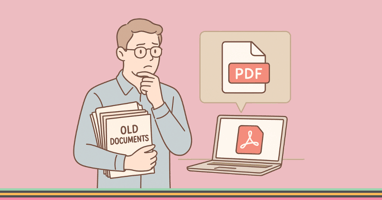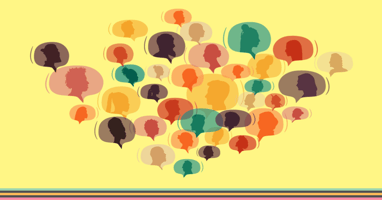Learn about the importance of complying with Web Content Accessibility Guidelines (WCAG 2.0) for...
WCAG 2.0 vs 2.1 vs 2.2 - How is it different for documents?
WCAG 2.0 vs 2.1 vs 2.2 – How Is It Different for Documents?
Summary
Understanding the differences between WCAG 2.0, 2.1 and 2.2 is essential for creating accessible documents. This blog outlines what’s changed in each version and what Australian organisations need to consider when remediating PDFs and other digital files.
____________________________
When it comes to digital accessibility, WCAG (Web Content Accessibility Guidelines) is the international standard. While originally focused on websites, WCAG also applies to downloadable content like PDFs and Word documents. With each new version, the guidelines evolve to reflect the needs of more users, including people with low vision, cognitive disability and mobility impairments.
For Australian organisations that share reports, forms or manuals online, staying up to date with the latest version of WCAG is important. But what are the real differences between WCAG 2.0, 2.1 and 2.2 when it comes to document accessibility?
At Meet Aandi, we specialise in helping you understand and meet these standards so your documents remain inclusive, usable and compliant.
What is WCAG?
WCAG stands for the Web Content Accessibility Guidelines. Published by the W3C, these standards help ensure that digital content is:
-
Perceivable
-
Operable
-
Understandable
-
Robust
These four principles guide how we create and fix content for users of assistive technologies such as screen readers, screen magnifiers, and keyboard-only navigation.
WCAG 2.0 – The baseline
WCAG 2.0 was released in 2008 and became the minimum standard for accessibility compliance in many Australian government agencies and institutions. It focuses on visual presentation, keyboard navigation, and screen reader compatibility.
For documents, this means:
-
Proper tagging of headings, lists and tables
-
Text alternatives for images
-
Logical reading order
-
Clear link text
-
Sufficient colour contrast
If your PDFs were made to meet WCAG 2.0, they likely meet a basic level of accessibility. But they may still fall short for many users.
WCAG 2.1 – Supporting touch, zoom and more users
Released in 2018, WCAG 2.1 builds on 2.0 by adding 17 new success criteria. These mainly address the needs of people with low vision, cognitive disability, and those using mobile or touch devices.
For documents, WCAG 2.1 adds focus to:
-
Reflow: Content should adapt when zoomed up to 400%, without requiring horizontal scrolling
-
Text spacing: Users should be able to adjust line height, paragraph spacing and letter spacing without losing content or functionality
-
Keyboard shortcuts: Avoiding issues caused by single-key shortcuts
-
Pointer gestures: Making interactive content accessible without complex gestures
If you’re remediating or designing a document today, WCAG 2.1 is the recommended benchmark.
WCAG 2.2 – Enhancing usability and cognitive accessibility
Released in late 2023, WCAG 2.2 introduces 9 new success criteria. Many are designed to improve the experience for people with cognitive disability or those with limited motor function.
Document-related highlights include:
-
Consistent help: Help options should appear consistently across documents if applicable
-
Dragging movements: Avoid requiring drag-and-drop where possible
-
Target size: Interactive elements (such as links in PDFs) must meet minimum size guidelines
While these changes may seem subtle, they significantly improve access for people with disability.
What version should you follow?
Most Australian organisations are currently required to meet WCAG 2.1, especially for government or public-facing content. However, moving toward WCAG 2.2 ensures better access for more people and shows leadership in inclusive practice.
At Meet Aandi, we encourage all clients to follow the latest guidelines to future-proof their documents and improve usability across the board.
WCAG 2.0 vs 2.1 vs 2.2: Key Differences for Document Accessibility
The table below compares WCAG 2.0, 2.1 and 2.2 guidelines, highlighting how each version affects accessible document creation. It outlines key differences in success criteria, support for low vision and cognitive disabilities, and how these changes apply to PDFs, forms and other digital documents.
This comparison helps Australian organisations understand why updating to the latest WCAG version matters especially when aiming for inclusive, compliant content.
|
Criteria
|
WCAG 2.0
|
WCAG 2.1
|
WCAG 2.2 |
|
Release Year
|
2008
|
2018
|
2023 |
|
Guideline Focus
|
Core principles: Perceivable, Operable, Understandable, Robust
|
Adds mobile and cognitive accessibility
|
Further supports users with cognitive and low vision disabilities
|
|
Number of Success Criteria
|
61
|
78
|
86
|
|
Impact on PDFs and Documents
|
Sets the foundation for accessible text, reading order, tagging and alt text
|
Introduces criteria that impact touch navigation, reflow and input labelling in documents
|
Adds requirements like visible focus indicators and accessible authentication, relevant to interactive forms and documents
|
|
Support for Low Vision Users
|
Basic zoom and text alternatives
|
Enhanced reflow, better contrast for text and images
|
Clear focus indicators and consistent navigation across document elements
|
|
Support for Cognitive Disabilities
|
Limited
|
Begins to address with input purpose and label criteria
|
Expands with criteria like avoiding timeouts and making authentication easier
|
|
Example Relevant Criteria
|
- Text alternatives (1.1.1)
- Reading order (1.3.2)
|
- Reflow (1.4.10)
- Input purpose (1.3.5)
|
- Focus appearance (2.4.11)
- Accessible authentication (3.3.7)
|
|
Applicability to Document Remediation
|
Foundational – required for tagged PDFs
|
Enhances user experience on mobile and tablets
|
Essential for inclusive forms, interactive PDFs and documents requiring login or input
|
How Meet Aandi can help
We stay up to date with the evolving standards so you don’t have to. Our team ensures your PDFs and digital documents are tagged, structured and reviewed according to the latest WCAG version — whether that’s 2.0, 2.1 or 2.2.
From reflow and alt text to link navigation and interactive form elements, we handle the details that make your content work for everyone.





